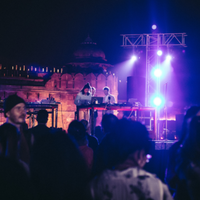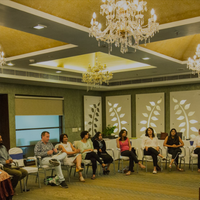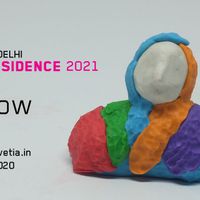Bangalore: Asian cultural actors connect

 Contributed by Dragan Klaic
Contributed by Dragan Klaic Why is Asia not an established cultural idea and an integrated cultural realm? Cultural activists from Central and South Asia explore mutual ignorance and differences in a rare Bangalore encounter.
In European intellectual and academic circles the Old Continent is frequently invoked as a cultural idea and a pattern of cultural practices, as an emerging integrated cultural space. Such discourse seems to be impossible in Asia, where Asia as a cultural idea and as an integrated cultural realm is denied and resisted, not least because the notion carries an irreversible colonialist connotation. What makes Asia impossible as a coherent cultural idea is not just the stunning diversity of its cultural traditions and contemporary cultural expressions but, perhaps more so, the lack of pan-continental interactions, cultural engagements and debates and the colonialist history of divisions and partitions.
On the occasions that Asian cultural producers and theorists think beyond own borders, they turn to the US, Europe and eventually Japan, where public and private funders can be found.
This lack of inter-Asian cultural experience and communication was clearly visible at a conference held in Bangalore in December 2008. CultureAsia: Connecting Asian Cultural Actors, was organised by the Arts and Culture Network Program of the Open Society Institute (Soros Foundations,) and Hivos, a Dutch development cooperation agency, together with the Center for the Study of Culture. The event brought together some 60 cultural activists from Central Asia (Kazakhstan, Kyrgyzstan, Tajikistan,Mongolia), and South Asia (India, Sri Lanka and Indonesia).
The contrast could hardly be greater. Central Asian countries share a common post-Soviet turmoil, decay and a forceful nation building by mainly despotic regimes. South Asian countries share a post-colonial experience, specified in the growth of Indian high-tech and Bollywood, Sri Lanka’s exhausting civil war, and a fragile Indonesian democracy, undermined by radical Islam and entrenched military authoritarianism. Central Asian countries have experienced de-industrialisation and re-islamisation, a loss of privileged cultural ties with Moscow and St. Petersburg that were the main conduits of modernization, albeit on Soviet terms.
In his key note address, the Calcutta theorist Rustom Bharucha criticised the political economy of curiosity in Asia. He targeted, in particular, those dominantly regionalist Indian vistas that signal a lack of interest in other Indian cultural constellations, beyond own state and own language, turning India into ‘multiple closed societies’. Bharucha also questioned civil society in India, recognising many grass root movements for equality and against poverty but also the ersatz civil society provided by the endless parade of gossiping and opinionated celebrities on television talk shows that claim to present a social debate. Despite the invisible migratory flows within
Asia, no Indian would call himself Asian, reiterated Bharucha, noting that cultural communication, artistic and intellectual exchange among Asian players lag behind the flow of commercial cultural goods, made in Asia or elsewhere in the world.
The OSI-HI VOS-CSCS event sought commonalities in divergent cultural constellations and paradigmatic and inspiring action models and strategies, a slow exploratory work that relied on presentations and discussions in numerous working groups.
For if even Indians stumble in trying to explain why there is no national cultural policy in India and provide a coherent and concise presentation of current cultural policy dilemmas, it is much more difficult for someone from Sri Lanka to render the tense, repressive circumstances in which he or she makes a play or film and seeks to engage with a broader audience.
Asian cultural actors connect in Bangalore and ponder their cultural gaps
There were some encouraging examples from Indonesia, such as an autonomous Jakarta Arts Council, distributing public subsidies at arms length from the authorities, or the fast growing Video Art Festival. These incidences stand in contrast to the more general trend of cultural inertia, decay and limited cultural production witnessed in all countries represented at the conference.
There were echoes of cultural nationalism from some Central Asian participants, a homogenising, forceful assertion of national identity to reinforce the new state against discarded Soviet models of universalism. Hence an occasional disregard of ethnic and linguistic minorities or indications of a growing tension between the Kazakh- and Russian-speaking cultural producers in Kazakhstan. In Kyrgyzstan and Mongolia oppressive poverty and isolation lead to a desperate search for some future perspective in the revival of the traditional shamanistic practices.
Inevitably, the dominant discourse was about globalisation which affects the entire region, albeit in contradictory manners, creating new opportunities and imposing uniformity, and a preponderance of commercially produced goods. Moreover, a consequence of globalisation is a dominant economic perspective in the cultural discussions and an expectation that culture produces economic gains instead of seeking subsidies, along the lines of the Bollywood model (whose profitability was also brought into question).Witness also the submission of cultural production to the tourism industry, an association which brings little cultural opportunities and stimulates the avalanche of the artisanal souvenir kitsch which government-sponsored stores seek to unload on gullible tourists.
A panel on cultural diversity voiced much scepticism about the ways national governments will implement the UNESCO 2005 Convention. The notion of sustainability, derived from development cooperation vocabulary, rings hollow in the cultural production discourse: while profitable commercial cultural production remains, at least in principle, an option for audiovisuals, book publishing, some sorts of music, design and architecture, albeit in an underdeveloped market, the other stream of artistic production, in visual and performing arts, remains dependent on external(public and private) funding, and thus never truly sustainable.
Between indifferent public authorities and whims of foreign and domestic donors, artists can only rhetorically invoke the sustainability prospect in application forms and then put up with their own precariousness as a fact of life. The other caricature of sustainability is the infrastructure of the tired cultural institution, set up in the Soviet or colonial or post-colonial period, now passive, dysfunctional, with little output and no policy, and yet kept on a minimum level of subsistence by government subsidies cover in a few meagre salaries and less than essential maintenance.
This is the common burden of South and Central Asia –public institutions in an advanced state of decay, all those museums with permanent exhibits gradually disintegrating due to climate and benign neglect. The cultural activists gathered in Bangalore spoke about them with resignation, feeling unable to resuscitate them, and in fact much more eager to create another alternative infrastructure of small, dynamic, mobile and audience directed cultural NGOs.
How those NGOs can interact, connect, collaborate and jointly advocate policy changes was discussed in the CultureAsia conference without many ready-made solutions. What could count as an outcome is the idea to set up travel and exchange schemes between Central and South Asia. Also to initiate a summer school of cultural activism, bringing together potential agents of change from Central and Southern Asia, giving them an opportunity for joint reflection and learning, from which some sustainable patterns of mutual curiosity and understanding might emerge, leading ultimately to collaborative ties across cultural spaces in Asia.
Dragan Klaic teaches Arts and Cultural Policy at the University of Leiden and serves as a Permanent Fellow of Felix Meritis Foundation in Amsterdam. He is a Visiting Professor of Cultural Policy at the Central European University, Budapest. This article has first appeared in the summer issue of the International Insitute for Asian Studies (IIAS) Newsletter.
Similar content
posted on
27 Aug 2011
deadline
19 Nov 2023
deadline
31 Oct 2018
from - to
11 Jan 2015 - 18 Jan 2015
deadline
01 Mar 2020






